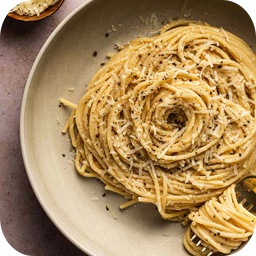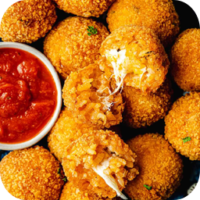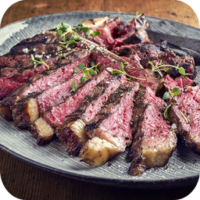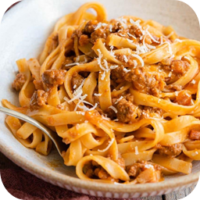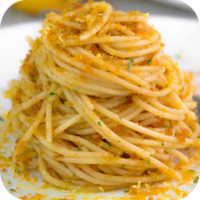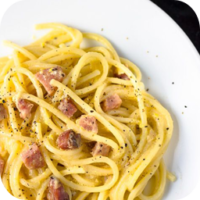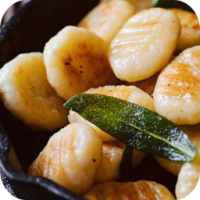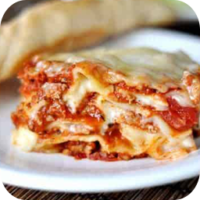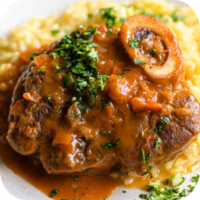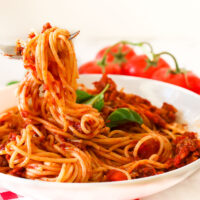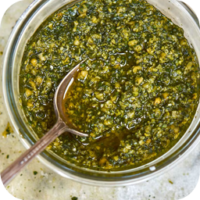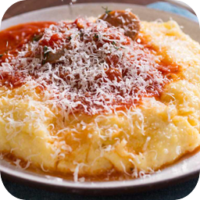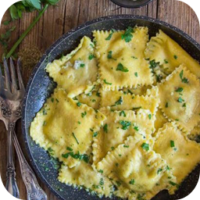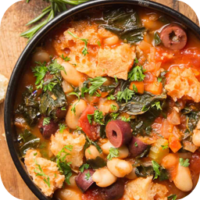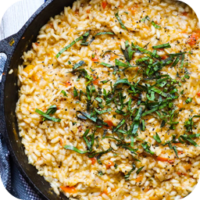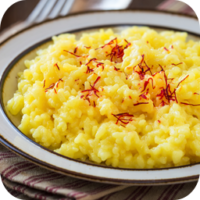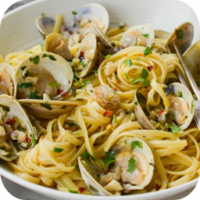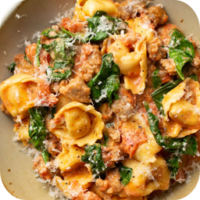Posted by theeatland
- Dec 28, 2024
- 77
- 0
Cacio e Pepe is a traditional Italian pasta dish from Rome, known for its simplicity and deliciously bold flavor. The name Cacio e Pepe translates to “cheese and pepper” in Italian, which are the two key ingredients that make up the sauce. It is considered one of the classical Roman pasta dishes alongside Carbonara and Amatriciana.
Key Features of Cacio e Pepe:
- Ingredients:
- Pasta: Traditionally, tonnarelli (a thick, square-cut pasta) or spaghetti is used. The pasta should have a rough surface, which helps the sauce adhere better.
- Pecorino Romano: This sheep’s milk cheese is the signature cheese used in Cacio e Pepe. It has a sharp, tangy flavor that’s crucial for the dish.
- Black Pepper: Coarsely ground black pepper is toasted in hot oil or butter to release its fragrance and flavor. The pepper provides a sharp contrast to the creaminess of the cheese.
- Pasta Water: The starchy pasta water is key to creating a smooth, creamy sauce that coats the pasta.
- Flavor Profile:
- Savory and Spicy: The combination of Pecorino Romano‘s salty, tangy taste and the black pepper’s pungency creates a simple but rich flavor.
- The cheese provides creaminess, and the black pepper adds a slight heat that balances the richness of the cheese.
- Texture:
- The dish is creamy, even though it doesn’t use any cream. The pasta water, cheese, and pepper emulsify to create a smooth, silky sauce that clings to each strand of pasta.
- Method:
- The pasta is boiled in salted water, and the cheese is finely grated. The black pepper is toasted in a little olive oil or butter to enhance its aroma.
- When the pasta is ready, some of the pasta water is added to the cheese and pepper mixture to create a creamy sauce. The hot pasta is then mixed in, allowing the sauce to coat the noodles perfectly.
- Serving:
- Cacio e Pepe is typically served immediately while the sauce is fresh and creamy. It is a comforting, flavorful dish that is simple to prepare but full of depth.
Traditional Recipe for Cacio e Pepe:
Ingredients:
- 400g (14 oz) spaghetti or tonnarelli
- 150g (5 oz) Pecorino Romano cheese, finely grated
- 1-2 tablespoons freshly cracked black pepper
- Salt for pasta water
- Olive oil or unsalted butter (optional, for toasting the pepper)
Instructions:
- Cook the Pasta: Bring a large pot of salted water to a boil. Cook the pasta until al dente, according to the package instructions. Reserve about 1-2 cups of the pasta water before draining.
- Toast the Pepper: In a large pan, heat a tablespoon of olive oil or a little butter over medium heat. Add the cracked black pepper and toast it gently for 1-2 minutes, allowing the pepper to become fragrant.
- Make the Sauce: Add about a cup of the reserved pasta water to the pan with the toasted pepper, stirring to combine and create a liquid base for the sauce.
- Combine Pasta and Sauce: Add the cooked pasta to the pan with the pepper-water mixture, tossing to combine. Gradually add the grated Pecorino Romano in batches, stirring to create a creamy sauce. If the sauce is too thick, add more pasta water to reach the desired consistency.
- Serve: Serve immediately, topped with additional Pecorino Romano and more freshly cracked black pepper to taste.
Variations:
- Add Butter: Some variations of Cacio e Pepe incorporate butter along with the olive oil to make the sauce even creamier.
- Lemon Zest: A few variations add a hint of lemon zest for a burst of freshness and contrast to the rich flavors.
- Pasta Variety: While spaghetti and tonnarelli are traditional, other pasta shapes like rigatoni or fettuccine can also be used.
- Pecorino Mix: A mix of Pecorino Romano and Parmesan can be used for a slightly milder, less tangy flavor.
Serving Suggestions:
- Cacio e Pepe is typically served as a main course in an Italian meal, but it can also work as a side dish for grilled meats or roasted vegetables.
- It’s often paired with a light white wine or sparkling water to balance the richness of the dish.
Tips:
- The key to a successful Cacio e Pepe is in the technique: the pasta water is what helps the cheese emulsify into a creamy sauce. Too little water can make it clumpy, so be sure to use enough of the reserved pasta water.
- Freshly cracked pepper is essential for the dish’s authentic flavor and aromatic experience.
Tags:
- Authentic Italian Recipes
- Black Pepper Pasta
- Cacio e Pepe
- Cheese and Pepper
- Cheese Pasta
- Classic Roman Pasta
- Easy Italian Meals
- Italian Comfort Food
- Italian Cooking
- Italian Food
- Italian Pasta
- Pasta Dishes
- Pasta Water
- Pasta with Cheese
- Pasta with Pecorino
- Pecorino Romano
- Quick Pasta Recipe
- Roman Cuisine
- Simple Italian Recipes
- Spaghetti
- Spicy Pasta.
Recommended Posts
- Dec 28, 2024
- 77 read
Arancini are traditional Italian rice balls that are typically stuffed with a...
Read Article- Dec 28, 2024
- 78 read
Bistecca Fiorentina is a classic Italian steak, originating from Tuscany, particularly the...
Read Article- Dec 28, 2024
- 84 read
Bolognese Sauce (known in Italy as Ragù alla Bolognese) is a rich,...
Read Article- Dec 28, 2024
- 77 read
Bottarga is a traditional Italian delicacy made from the roe (eggs) of...
Read Article- Dec 28, 2024
- 77 read
It seems like you might be referring to Carbonara, a famous Italian...
Read Article- Dec 28, 2024
- 81 read
Focaccia is a traditional Italian flatbread that is similar in texture to...
Read Article- Dec 28, 2024
- 84 read
Gelato is a traditional Italian ice cream that is known for its...
Read Article- Dec 28, 2024
- 75 read
Gnocchi is a type of traditional Italian dumpling made from potatoes, flour,...
Read Article- Dec 28, 2024
- 78 read
Lasagna is a classic Italian dish that consists of layers of wide,...
Read Article- Dec 28, 2024
- 79 read
Neapolitan Pizza (or Pizza Napoletana) is a traditional Italian pizza that originated...
Read Article- Dec 28, 2024
- 65 read
Ossobuco is a traditional Italian dish originating from the region of Lombardy,...
Read Article- Dec 28, 2024
- 73 read
Pasta is a fundamental and iconic component of Italian cuisine, with its...
Read Article- Dec 28, 2024
- 71 read
Pesto is a classic Italian sauce originating from the region of Liguria,...
Read Article- Dec 28, 2024
- 64 read
Polenta is a traditional Italian dish made from cornmeal, which is a...
Read Article- Dec 28, 2024
- 76 read
Ravioli is a type of Italian pasta that consists of small, square...
Read Article- Dec 28, 2024
- 75 read
Ribollita is a traditional Italian soup that originates from the Tuscany region....
Read Article- Dec 28, 2024
- 65 read
Risotto is a traditional Italian dish made from short-grain rice, most commonly...
Read Article- Dec 28, 2024
- 78 read
Risotto alla Milanese is a classic Italian dish that originates from the...
Read Article- Dec 28, 2024
- 70 read
Spaghetti with Clams (Italian: Spaghetti alle Vongole) is a classic Italian pasta...
Read Article- Dec 28, 2024
- 65 read
Tiramisu is a classic and beloved Italian dessert, known for its rich...
Read Article- Dec 28, 2024
- 72 read
Tortellini is a traditional Italian pasta that originates from the Emilia-Romagna region...
Read Article
